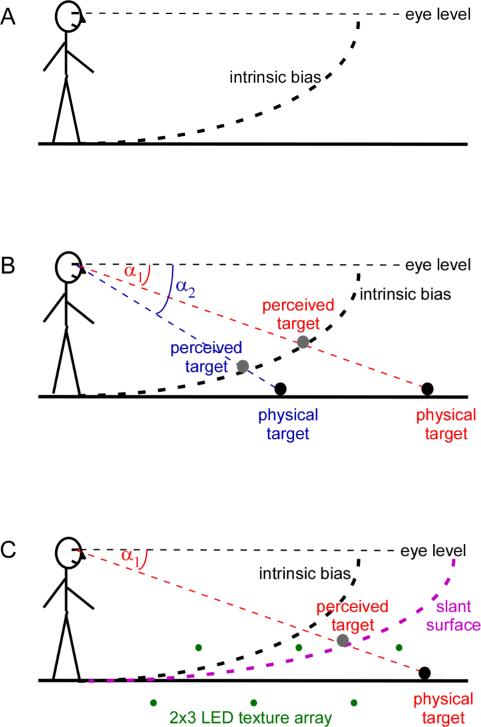Figure 1.
Influence of intrinsic bias on space perception in the dark and reduced-cue environments. (A) The intrinsic bias takes the form of an implicit slant/curved surface and it acts like a representation of the ground surface when the physical ground surface is not visible in the dark. (B) A dimly-lit target on the non-visible ground surface in the dark is perceived at the intersection between the eye-to-target projection line and the intrinsic bias. The perceived distance of the dimly-lit target increases as the angular declination of the dimly-lit target (α1<α2) decreases. (C) The dimly-lit target in a reduced cue environment is located on an implicit slanted surface that is less slanted than the intrinsic bias.

